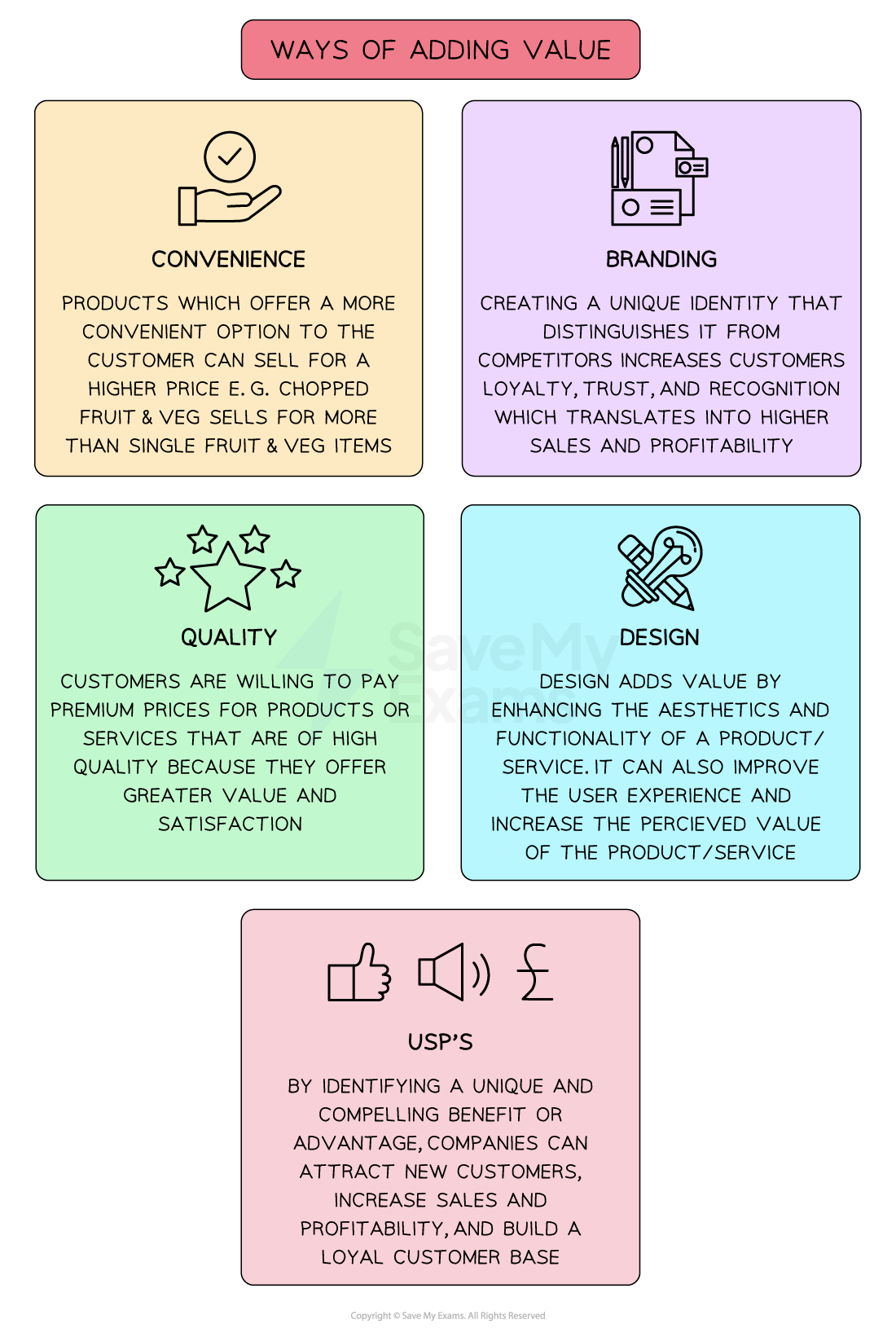Syllabus Edition
First teaching 2025
First exams 2027
The Nature of Business Activity (Cambridge (CIE) IGCSE Business): Revision Note
Exam code: 0450, 0986 & 0264, 0774
Factors of production
Factors of production are the resources used to produce goods and services
They include land, labour, capital and enterprise

The production of any good or service requires the use of a combination of all four factors of production
Goods are physical objects that can be touched (tangible), e.g., a mobile phone
Services are actions or activities that one person performs for another (intangible), e.g., a manicure or car wash
Explanation of the four factors of production
Land | Capital |
|---|---|
|
|
Labour | Enterprise |
|
|
Adding value
Adding value is the process of taking raw materials and using them in such a way that the end product created is worth more than the cost to make it
It is therefore the difference between the price charged to the customer and the cost of inputs required to create the product or service
For example, customers are prepared to pay more for potatoes when they are packaged as oven chips than they would be willing to pay for a bag of potatoes
The greater the added value, the more successful the business is likely to be and the higher their profits
Product and marketing teams explore ways to increase added value

Examples of added value
Method | Example |
|---|---|
Branding |
|
Convenience |
|
Quality |
|
Unique selling points (USPs) |
|
Design |
|
Examiner Tips and Tricks
Don’t confuse adding value with profit – adding value is the difference between cost of inputs and selling price
Opportunity cost
Opportunity cost is the loss of the next best alternative when making a decision
Businesses thrive when they are able to meet customer needs and wants
Needs are essential, e.g. shelter or food
Wants are desires which are not essential e.g Nike trainers
Due to the problem of scarcity, there is a basic economic problem
Choices have to be made by producers, consumers, workers and governments about the most efficient use of resources
There is an opportunity cost in the allocation of resources
When a consumer chooses to purchase a new phone, they may be unable to purchase new jeans
The jeans represent the loss of the next best alternative (the opportunity cost)
When a producer decides to allocate all of their resources to producing electric vehicles, they may be unable to produce petrol vehicles
The petrol vehicles represent the loss of the next best alternative (the opportunity cost)
When a government decides to provide free school meals to all primary students in the country, they may be unable to fund rural libraries, which may have to close
The libraries represent the loss of the next best alternative (opportunity cost)

Unlock more, it's free!
Did this page help you?